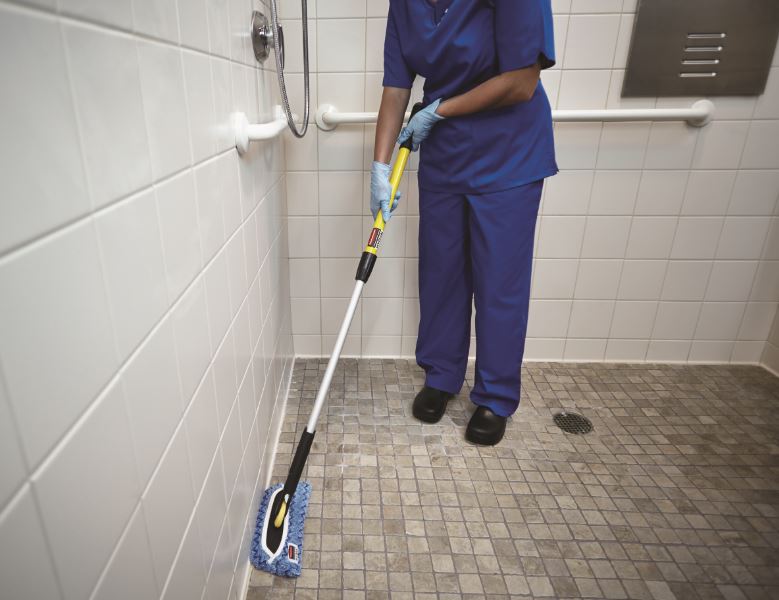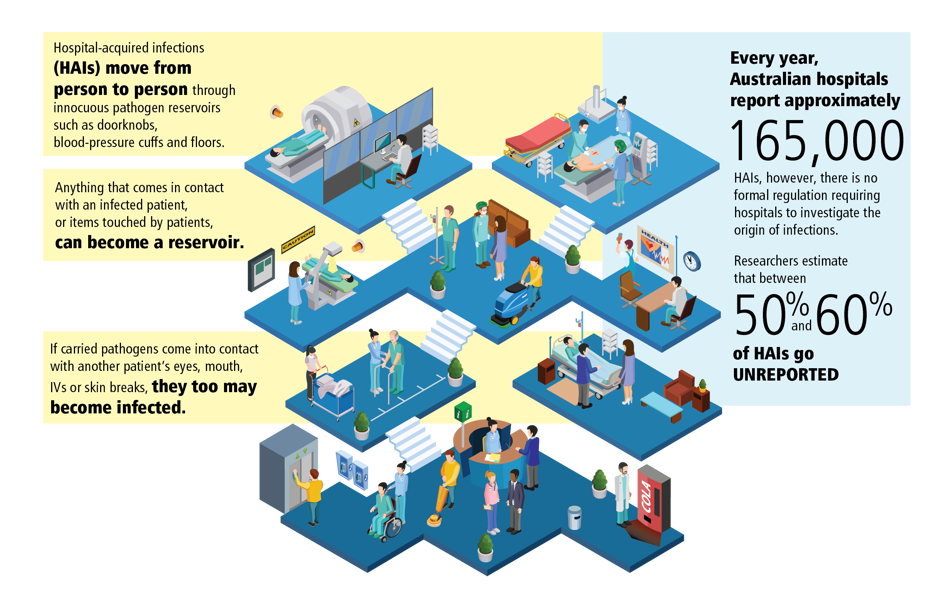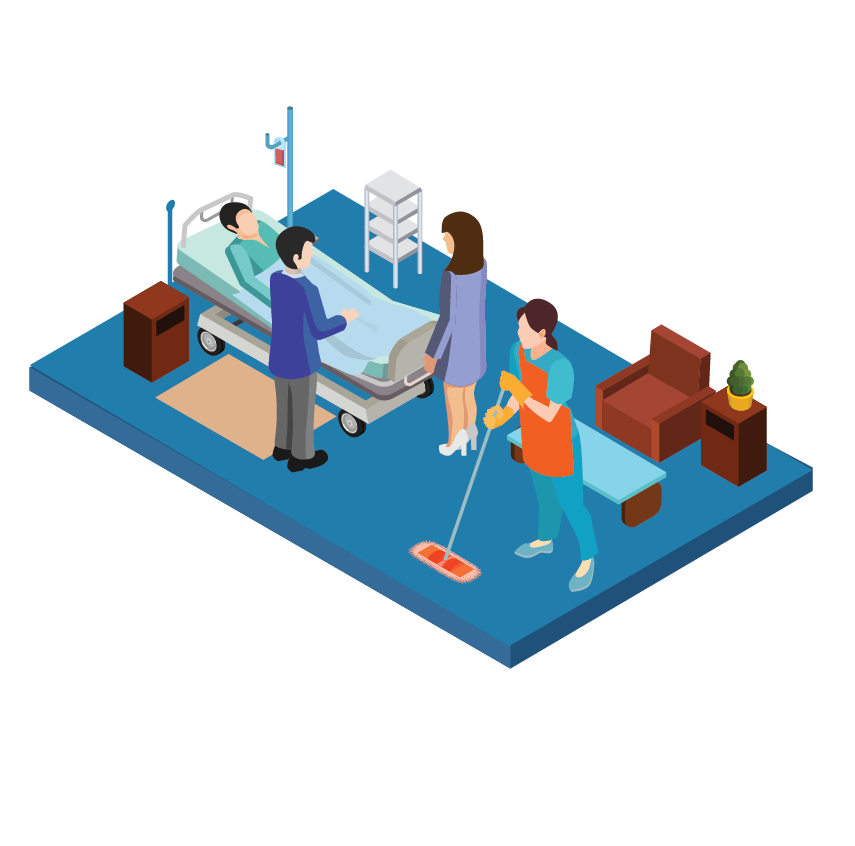
In many hospitals, floor cleanliness is taken for granted. If there aren't any obvious signs of dirt, dust or bodily fluids, they must be free from pathogens, right?
Recent studies indicate this line of thinking may be too optimistic. In fact, research published in the American Journal of Infection Control suggested that floors in hospital patients' rooms are frequently contaminated with disease-causing pathogens.
The research indicated that when high-touch items come into contact with the floor, they too become a source of infection. In the study, cultures were taken from the hands of people who had touched objects that once made contact with the floor. In almost every instance the cultures revealed potentially dangerous pathogens such as MRSA.
Understanding the chain of infection is the first step toward improving cleaning practices.
Dirty floors and hospital-acquired infections

Traditional cleaning practices may not be sufficient to stop the spread of HAIs. Improper mopping techniques could actually cause pathogens to spread from patient rooms into common areas. Health care stakeholders need to consider how custodial responsibilities impact patient health.
Wet mopping: Helpful or harmful?

In addition, used mop heads can retain pathogens even after they are wringed out. If the mop heads are not allowed to dry properly, they could become a breeding ground for infections and spread disease to healthy people and patients alike.
In a recent study of Canadian hospitals, researchers reported finding a "massive initial contamination on the mops" prior to use. After a disinfectant was applied to the mop heads, the number of pathogens was reduced, but not eliminated. In other words, even a chemically disinfected mop head could still be a source of infection. When the researchers laundered the mop heads, their results improved - the mop heads were no longer considered contaminated.
There's still a place for wet mopping in hospitals, but how it's conducted may need to change. In addition to laundering mop heads and regularly cleaning and disinfecting buckets, health care facilities should consider using microfibre flat mops.
Compared to traditional mop heads, microfibre covers are easier to launder. Plus, they can be color-coded for use in specific areas of the hospital. Designating specific mop heads for use in patient rooms and in common areas can stop infections spreading beyond the hospital.
Dealing with obvious biohazards
Floors are an overlooked source of contamination because they may appear clean while still harbouring pathogens. But when the hazard is obvious - such in the case of spilled blood - immediate action is necessary.
Bodily fluids can more readily transmit infectious pathogens than high-touch objects. As such, obvious biohazards should be removed and the area disinfected as soon as possible. Specialised spill mops with highly absorbent mop heads trap liquid and turn it into a gel to prevent leaks. This allows for quick removal of contaminated liquids so that the area can be cleaned and thoroughly disinfected.
Understanding floor cleaning best practices
Using disposable or launderable microfibre flat mop heads can prevent the spread of HAIs. In addition to using the right equipment, custodians should also utilise best practices such as always moving from clean areas to dirty areas.
For instance, a mop used in a patient's room should be sent to the laundry immediately after use. If it's used a second time in another patient's room, it could spread germs. Likewise, custodians should be careful not to let used mop heads touch other objects or people. Custodians should disinfect their hands frequently to avoid becoming sick themselves.
With the right practices and products, hospitals can reduce the risk of HAIs and improve patient health.
To learn more about the latest innovations in commercial cleaning solutions, check out what Rubbermaid Commercial Products has to offer.
